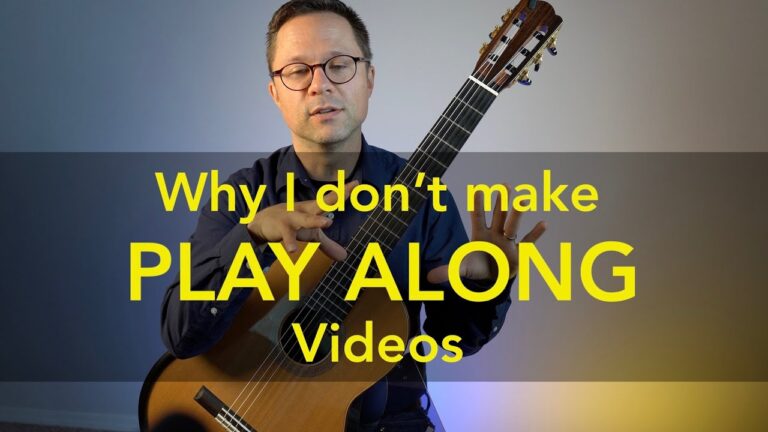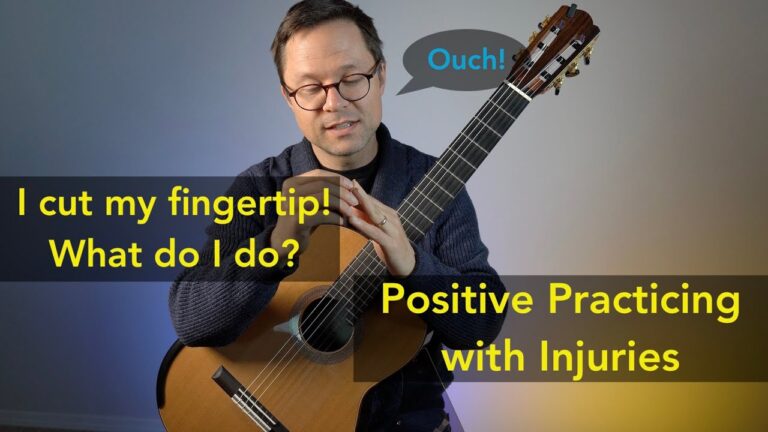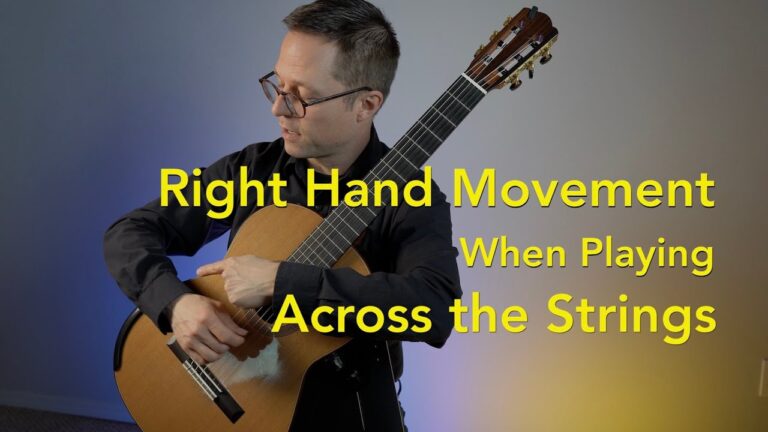In this lesson I cover how to practice difficult parts, sections, or passages in music. Here’s a breakdown of my tips: Stay calm, spot practice, break down the movements, break down the music, focus on specific issues, practice related technique, slow metronome work, keep track of your progress.
In the video I mention a few books and editions, listed below. Also see my page on How to Use my Educational Series.
- Suite in E Minor BWV 996 by Bach (Complete), Advanced, Free Unfingered, Sheet Music or Tab
- Classical Guitar Technique: Essential Exercises, Scales, & Arpeggios – 122 pages, Video lessons. Start anytime after Vol.2 method and continue with repertoire lessons.





Super helpful. Rock on!
This lesson has provided me with a clear path forward with my practice. I was recently gifted a classical guitar for my 70th birthday and I am currently working through your method book 1. My aim is to complete your method book 1 & 2, your technique book and your beginner pieces before my 71st birthday. I’m really enjoying the learning process (and my sound progress) mainly due to your informative books and instruction videos. Thanks Brad
REALLY good piece, thank you.
Brad, great piece. For me there is a major step before getting to the level you’re describing of mastering a troublesome segment, and that is very deliberately at the beginning working out the fingering you’re going to use and then sticking with that. There are often several ways of fingering a passage and when I don’t have access to my instructor to coach that, I struggle sometimes in finding the best way to finger a passage. If I don’t experiment with different ways and find what works from the previous passage and transitions to the following, I’ll bounce around and change during the practice. Pivot fingers, slides, etc. are sometimes hard for me to nail down.
Any suggestions on how to work through this earlier step?
I really wish I could say there was a way to decide fingering right off the start but it’s not always true. Some occasions there is only one fingering for musical or technical reasons but at other times there are multiple. As my tempo and quality of playing increases during practicing my fingerings sometimes change. Actually, that is one good reason to get sheet music from someone who performs the music. After I record a piece for a new edition I often do last minute revisions just before recording it because what was good at my desk while entering the fingering was less good when I performed it up to tempo. So there may not be any skipping this revision step. The good thing is that when you re-finger something you need to rethink it and that allows you to know the piece better which is a good thing in the end.
Time is always the hero or the culprit. I will start a piece and in less than an hour I am attempting speeds that I refuse not to be able to play at, creating failure. Thank you for revealing that all of us need to slow down, even when we think that we are already. We need to remember that there is nothing more that we will enjoy than playing our guitar. So why hurry now. (at practice) Thanks Bradford
Very good tips, thanks. I find the slow metronome work being highly valuable, though I have to remind myself to do it. It is very encouraging to first establish that I can play a passage if I just slow it down enough. It also helps to pinpoint the real trouble spots in the passage for focused work.
This is so helpful!!! Thank you so much. One of the most helpful things was the way you used yourself as an example to frame the entire discussion. It is inspiring for novices, like myself, to hear the reminder that you (a professional) must go through this process, too. Super thoughtful lesson. Thank you!!
Frequently, in many of your lessons, you mention the fact that “this may take some time.” Many instructors do that. However, few ever explain what that really means.
This may take 10 – 15 minutes? Hours? Days?
The student (me) will often invent an overly-optimistic “time.”
So, if after devoting 10 – 15 hours to a particularly difficult piece/passage I’m still having difficulty, I may begin to question decision to devote my time to this instrument.
Could you occasionally be a little more specific, so I don’t set unrealistic goals.
Thank you for all the effort you put into this superb website.
Hi John,
The reason teachers avoid saying how long something will take is that there are way too many variables: the difficulty of the passage, the level of the piece in relation to the level of the student, the student’s positivity and patience, the strength and weaknesses of the student, if they are in a rush to perfect it for a performance or just practicing at home, etc etc. Even more importantly, if I say 5 minutes a day for 2 weeks and the student can’t play it they will be demoralized. It takes as long as it takes, sometimes it even takes stopping altogether and returning a year later after your technique is more developed.